Probably everyone from childhood is familiar with such a flower as geranium. Many flower growers breed it for decorative purposes and to create a special aura. Geranium growing in the house is known for its benefits as a medicinal plant, but it can also harm the human body if used improperly.
Content
History of growing geraniums and folk signs
Pelargonium was introduced to Europe from South Africa. Thanks to the work of breeders, many cultivars have appeared that are easy to care for and have a beautiful appearance. Today, pelargonium is quite popular as an element of internal decor for various cafes, shops and other institutions, because it has a long flowering period.
There are many shades of geraniums and there is a belief that depending on the color, a little Kalachik can influence the aura of a house or a family in different ways:
- red - gives vitality, saves from fatigue and fights laziness;
- pink - helps to attract a soul mate and keeps the hearth;
- purple flower directs to enrich the inner world, the development of spirituality;
- white - symbolizes fertility, it is good to give it to the wedding.
The benefits of geraniums in the house
The healing properties of pelargonium were recognized several centuries ago and are still popular. Moreover, in traditional medicine, different parts of the plant are used: from leaves to roots.
Chemical composition
The benefits of geranium are due to its chemical composition, which makes it possible to confirm the medicinal properties of the flower from a scientific point of view. The composition of the plant includes such important elements:
- Glucose and fructose.
- Flavonoids that affect the activity of various enzymes in the body.
- Catechins are powerful antioxidants.
- Saponins, which have an anti-inflammatory effect.
- Tannins - remove toxins, improve digestion.
- Carotene.
- Vitamins C and K.
- Alkaloids, which can affect the activity of the nervous system, as well as the work of blood vessels.
- Anthocyanins - have a bactericidal effect.
- Manganese and copper.
Due to the presence of such a complex of substances in pelargonium, it is used for the treatment and prevention of various diseases.
Beneficial features
Despite the fact that the flower does not belong to medicinal plants from a botanical point of view, it has many useful properties:
- antimicrobial and antiviral effects;
- ability to stop bleeding;
- help in the disposal and prevention of puffiness;
- the fight against skin inflammatory processes;
- destruction of pathogenic microflora of the mucosa;
- lowering blood pressure;
- treatment of osteochondrosis and radiculitis;
- a positive effect on the liver, kidneys and gastrointestinal tract;
- improvement of the cardiovascular system;
- the fight against emerging tumors;
- regulation of reproductive function in men and women;
- stress relief and improved sleep.
These beneficial properties of pelargonium have made it popular with traditional healers who use the plant to normalize and improve human health.
Effect on indoor microclimate
The presence of pelargonium in a house or apartment has a positive effect on the microclimate. Even if you do not take into account that, according to the signs, this plant has an exceptional aura that affects the well-being of the house, the flower creates a special atmosphere due to its chemical composition. Phytoncides contained in the leaves of kalachik kill harmful bacteria and microbes in the air. Thus, the flower helps get rid of colds and viral diseases.
Also, the geranium aroma calms the nervous system, which helps to forget about constant stress or migraines. Aromatic plant oils improve the mood of a person who breathes this smell.
An additional bonus from breeding on the windowsill of the pelargonium will be the absence of insects in the living room, as they do not tolerate the specific aroma of the flower.
Geranium oil
Especially popular is the plant oil, which includes the valuable aromatic alcohol geraniol. This tool is used for medical and cosmetic purposes, as it has antibacterial, anti-inflammatory and regenerative properties. Due to this, oil is used to treat the following diseases:
- acne;
- cellulite;
- psoriasis;
- various eczema;
- consequences of frostbite and burns;
- migraine;
- insomnia.
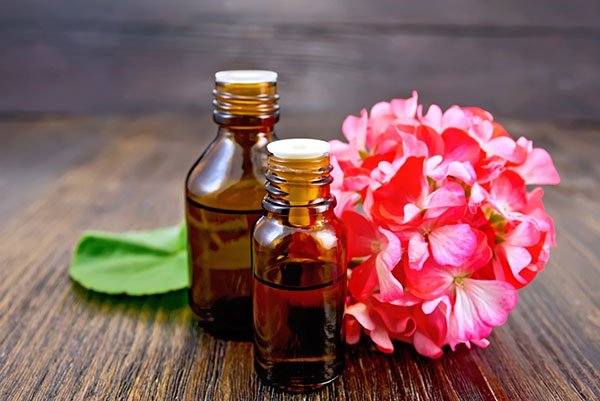
Also, oil is actively used by cosmetologists to prepare various face masks that help smooth the skin, as well as normalize the sebaceous glands.
Geranium harm to humans and contraindications
Due to the specific chemical composition, geranium is sometimes able to harm human health. The most common problem associated with this flower is an allergic reaction to it. In case of its occurrence, symptoms in the form of headache, cough, nasal congestion, swelling of the mucosa are possible. With the appearance of such a reaction to pelargonium, you will have to get rid of the plant, since individual intolerance is a rare phenomenon, but there is no cure for it.
Medicines based on geranium are contraindicated in a number of cases:
- chronic diseases of the gastrointestinal tract;
- exacerbation of ulcers, gastritis;
- thrombophlebitis;
- high blood viscosity.
Also, pregnant and lactating women, young children and older people should limit the use of any medication with Pelargonium oil or any of its components. For these groups, it is permissible to use the plant externally when such a need arises.
Use in traditional medicine
Although official medicine does not recognize geranium as a medicine, there are many folk recipes for the treatment and prevention of various diseases based on it.
Nervous and cardiovascular system
Geranium broth is used as a sedative, which helps to get rid of tension and irritation, has an antidepressant effect.
It is very simple to prepare it:
- Pour boiling water over 1 tbsp. spoon of pelargonium root, previously chopped it.
- Bring such a decoction to a boil and let it simmer for 10 minutes.
- After cooling, strain the infusion and put it in a cool place.
Take such a decoction is recommended for 2 tbsp. spoons a couple of times a day. The same infusion can be taken to normalize the pressure, while the daily dose is 200 ml, it must be divided into 3-4 doses and consumed before meals.
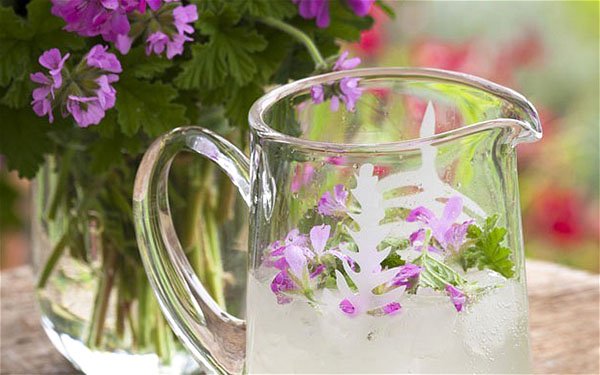
At high pressure, you can also prepare the following alcoholic infusion of pelargonium:
- Collect and chop 3 tbsp. spoons of leaves and flowers.
- Pour them in 100 g of alcohol.
- Place in a tightly closed container and insist 3 days in a dark and warm place.
- Take on an empty stomach in the morning and at bedtime in the evening, diluting 10 drops of infusion with water.
Gynecology
There is a popular belief that a small stick helps to cure infertility, and gets pregnant faster. There is no medical evidence for this fact, but nevertheless in folk medicine there are several options for its use. For conception:
- A pinch of flowers (preferably red) pour a glass of boiling water.
- Insist in a dark place for 10 minutes.
- The resulting infusion is filtered and taken throughout the day.
It is recommended that both spouses be taken until the moment of conception.
Also, geranium oil can be used to treat infertility as a method of ingestion of a few drops 2-3 times a day, as well as for aromatherapy and massage. The action of this recipe is based on the fact that phytoestrogens are included in the composition of geraniums, which help normalize the hormonal background of a woman.
To reduce pain during menstruation, flower oil is used for aroma lamps, it relieves nervous tension and relieves pain. Since pelargonium has a hemostatic effect, the infusion from it is also used to treat uterine bleeding. To do this, you need:
- Pour 2 tablespoons of chopped leaves with water.
- Insist 7-8 hours, strain.
Take the resulting infusion throughout the day, divided into equal portions.
Inflammatory processes of different localization
The anti-inflammatory effect of geranium is used to treat such diseases:
- Otitis - the leaf of the plant needs to be kneaded and, twisting the tube, put inside the ear for the night. You can also use flower oil for this by dropping a few drops into a sore ear.
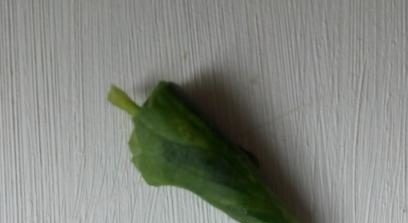
Turunda in the ear from a leaf of geranium - Rheumatism - prepare an infusion of 25 g of leaves boiled in 0.5 l of water for 20 minutes, you need to take such a decoction during the day in large sips.
- Sprain and inflammation of the ligaments - will help gruel from finely chopped leaves, applied under a bandage for 30 minutes.
- Cough - inhalation with a few drops of pelargonium oil helps well.
When using these recipes, the age of the patient and the complexity of the disease should be considered.
Dermatology and cosmetology
Geranium leaves and oil are also widely used in dermatology, because the plant helps to heal wounds, helps with burns, purulent inflammations, abscesses. For the treatment, gruel from the leaves is used, or simply the leaves of the flower are applied to the sore spot. In the presence of boils, you can prepare an infusion of leaves and wash the wounds with it.
In cosmetology, a small pen is used to make various face masks, since they normalize the condition of the skin and improve its regeneration.
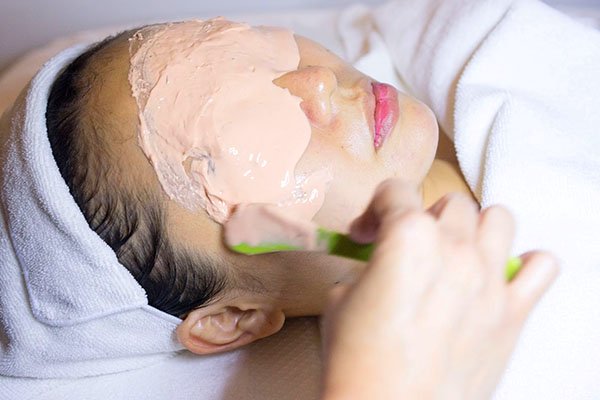
For wrinkles:
- 20 drops of oil;
- medium-sized peach;
- 1 tablespoon of cream.
Mix all the ingredients into a homogeneous mass, apply to clean skin and hold for 30 minutes, then rinse with cool water.
For sensitive skin:
- 1 tbsp. a spoon of rice flour;
- 3 tbsp. spoons of sour cream;
- 25 drops of geranium ether.
Cook the pulp and apply on the face, rinse after 20 minutes.
Other diseases
In addition to the above options for using the plant in folk medicine, they also treat:
- hemorrhoids;
- thyroid gland;
- Toothache
- kidney stones and gall bladder.
Common questions
Geranium is an indoor plant with beautiful flowers, green and fragrant leaves, as well as useful properties that will help improve well-being. According to legend, the plant will bring peace and prosperity to the house.

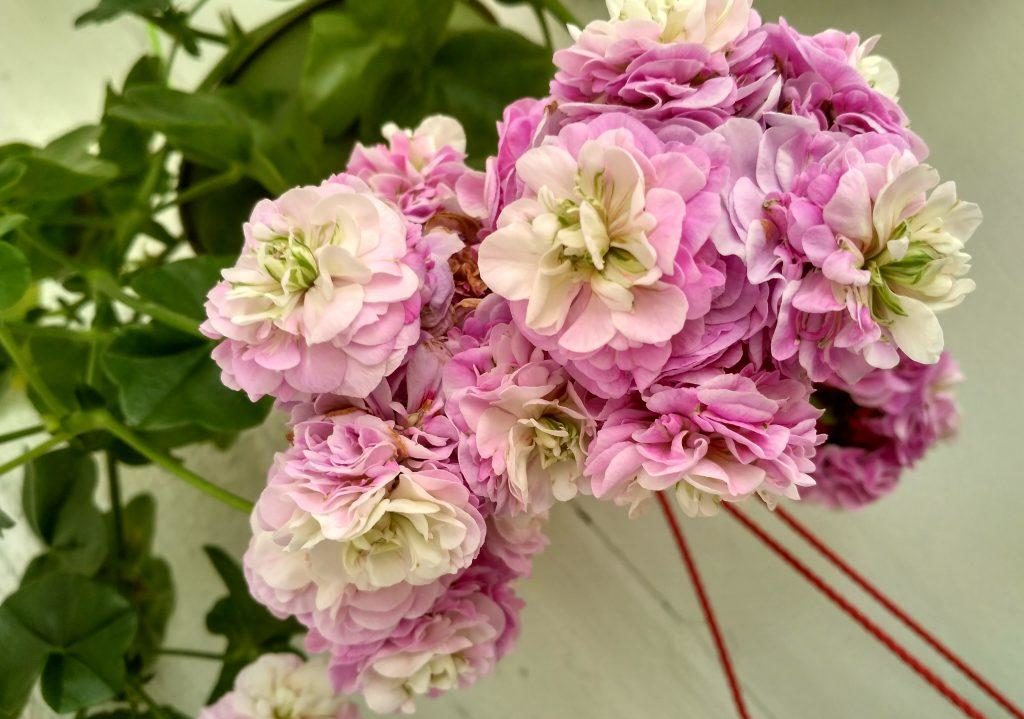
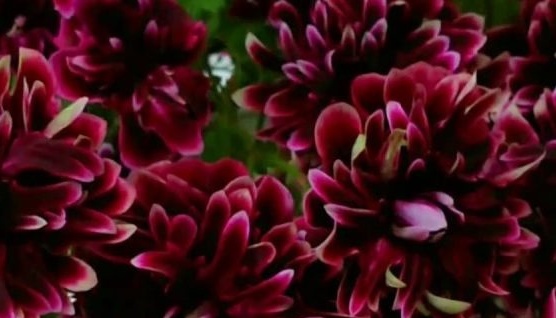
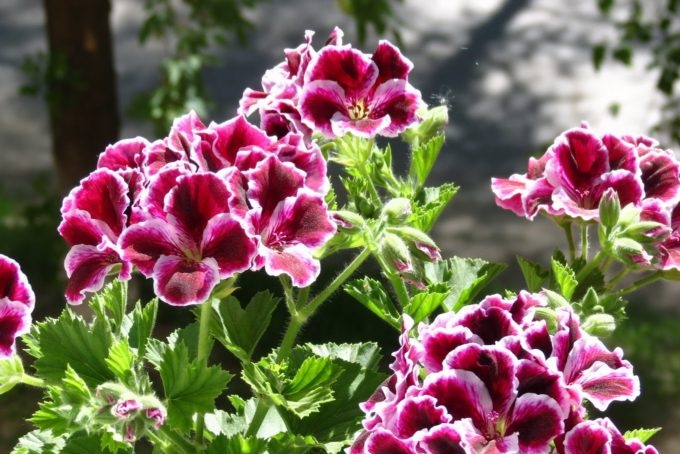
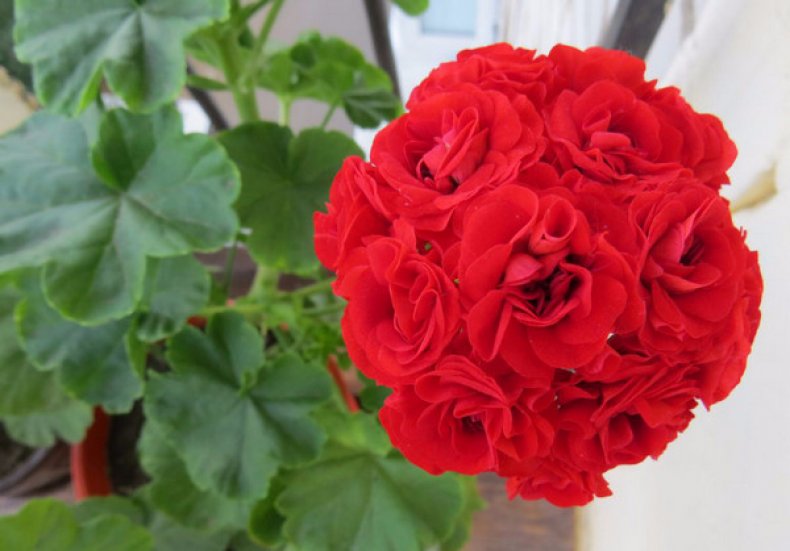
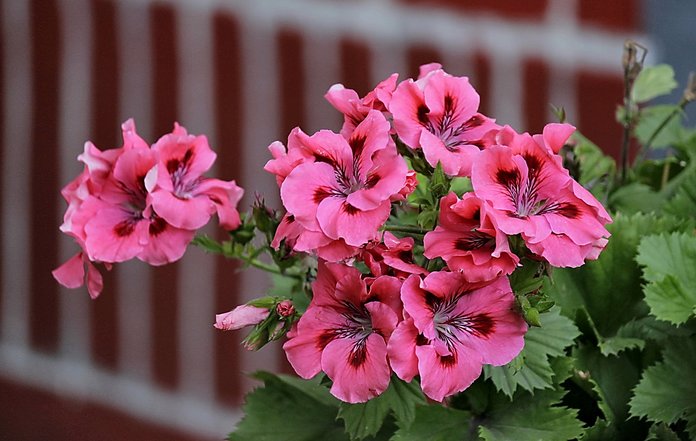
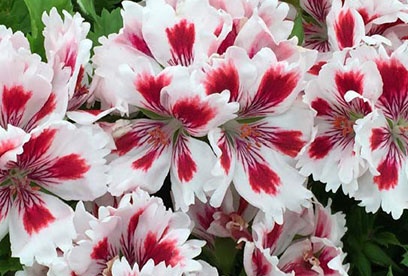
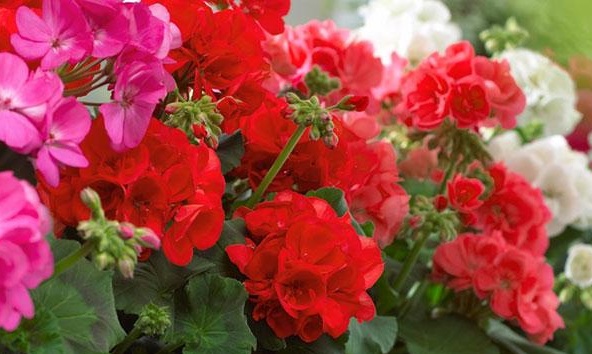
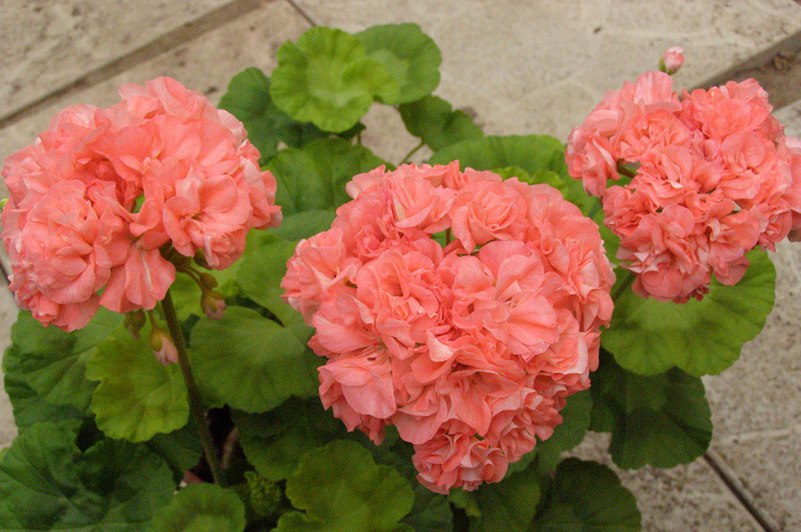
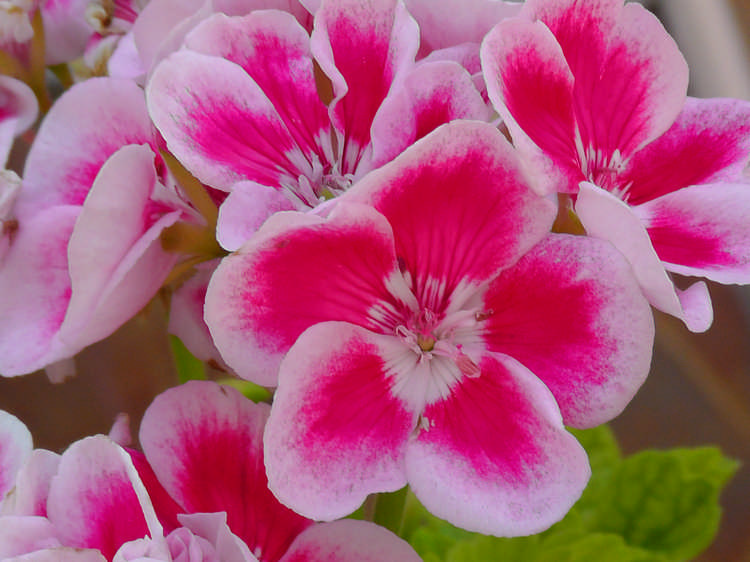



 10 beautiful annuals that bloom all summer
10 beautiful annuals that bloom all summer Sow in the ground, without seedlings: 10 beautiful and unpretentious flowers
Sow in the ground, without seedlings: 10 beautiful and unpretentious flowers Platicodon planting and outdoor care
Platicodon planting and outdoor care Hosta - planting and care in the open ground in the Urals
Hosta - planting and care in the open ground in the Urals